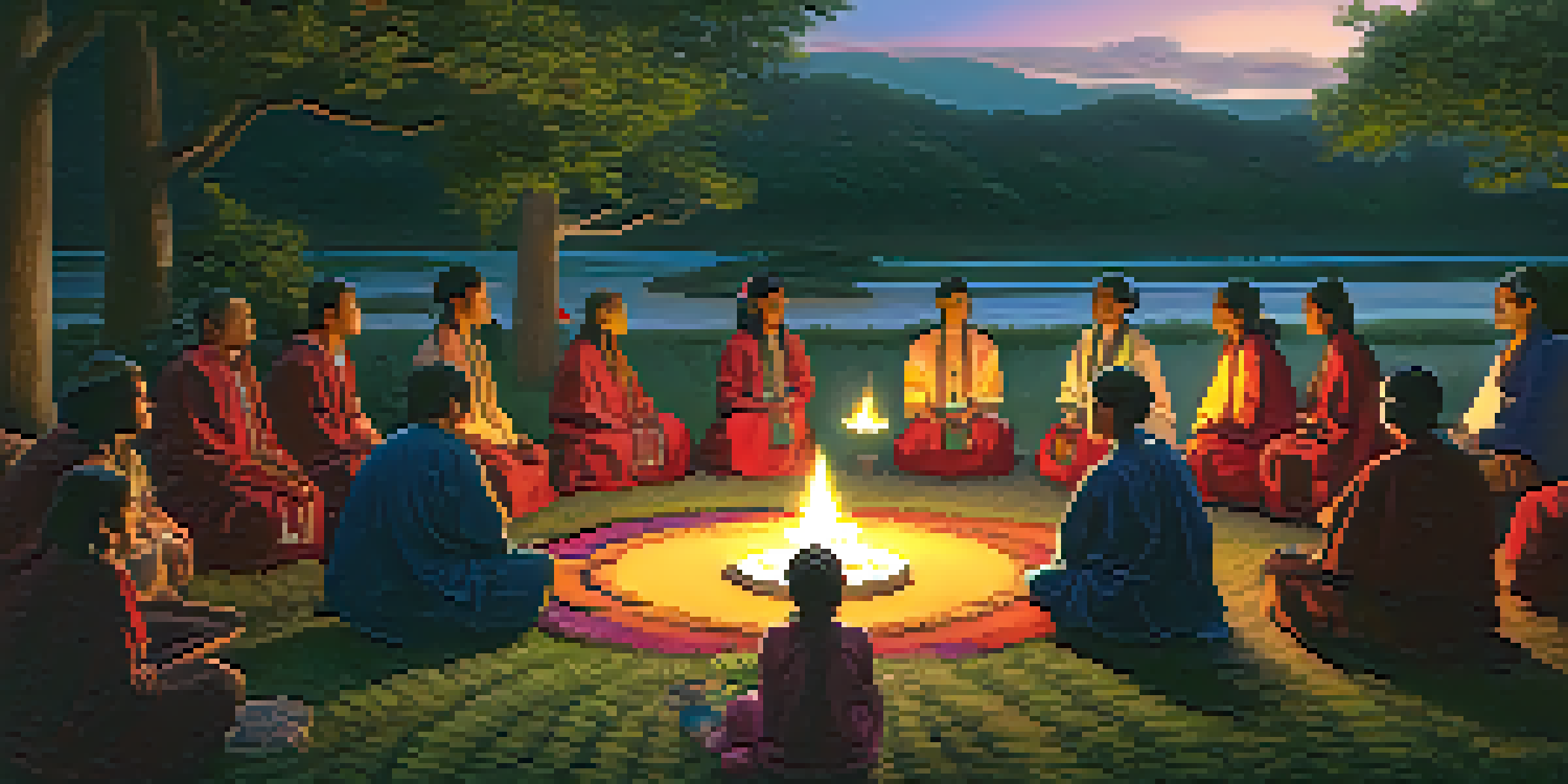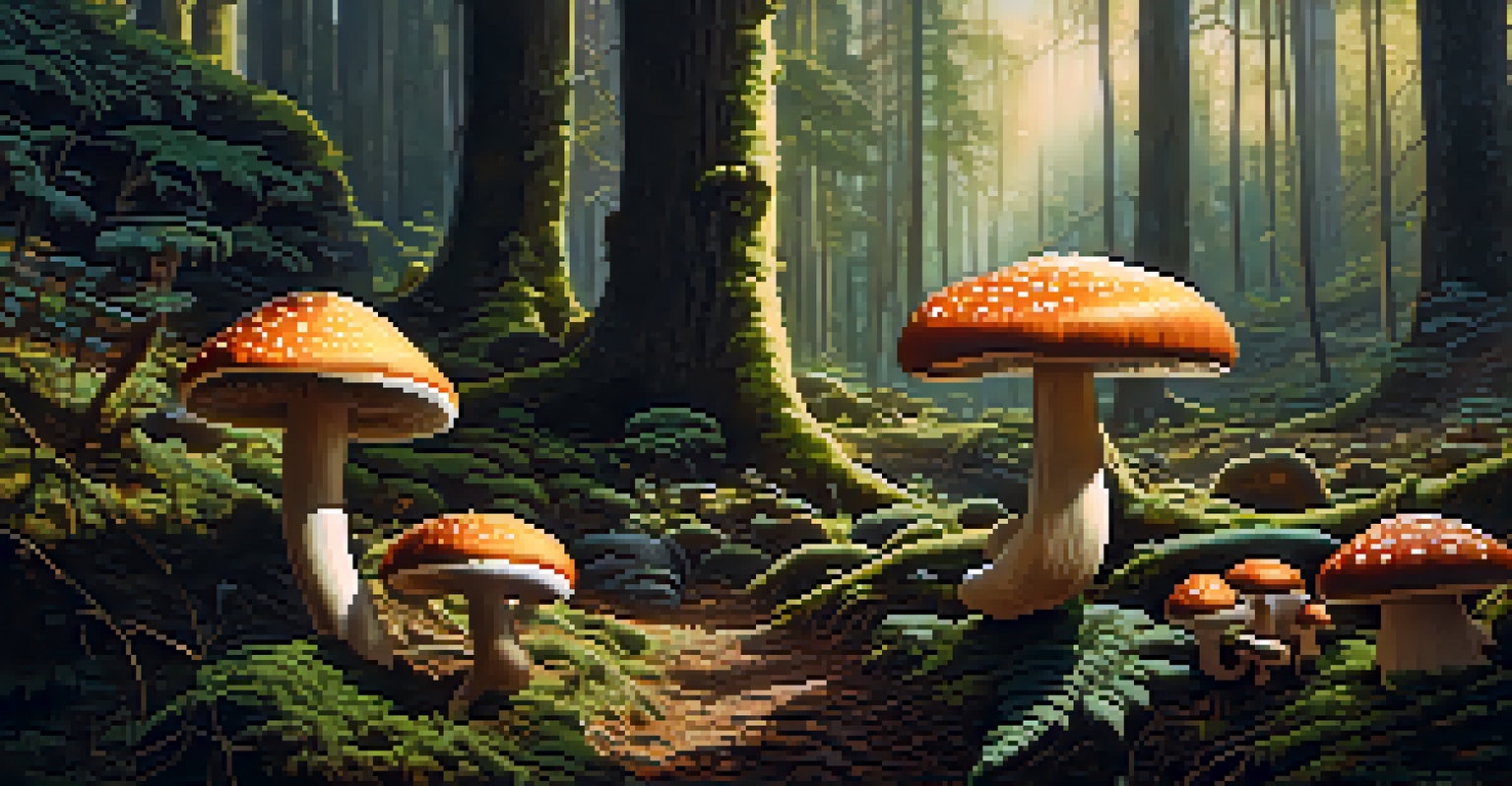The Role of Hallucinogens in Traditional Medicine Practices

Understanding Hallucinogens and Their Origins
Hallucinogens are substances that alter perception, mood, and various cognitive processes. Traditionally, these substances have been utilized in various cultures for centuries, often in ceremonial contexts. They derive from plants and fungi, with examples like psilocybin mushrooms and peyote cactus playing significant roles in indigenous practices.
Psychedelics are a way of experiencing the world that is not often understood in our culture, but they have the potential to heal and to reveal deep truths about ourselves.
These natural hallucinogens are not just for recreational use; they have deep-rooted significance in rituals, often aimed at connecting with spiritual realms or promoting healing. For many cultures, these experiences are viewed as essential for mental and spiritual well-being. Thus, understanding their origins helps to appreciate their role in traditional medicine.
In many cases, the use of hallucinogens is accompanied by rituals led by trained shamans or healers. These practices are designed to guide individuals through their experiences, ensuring safety and understanding. This cultural context is crucial for comprehending how these substances function within traditional healing frameworks.
Cultural Significance of Hallucinogens in Healing
Hallucinogens are often intertwined with the cultural identity of various indigenous groups. For them, these substances are not merely tools for healing; they symbolize a connection to their ancestors and the universe. This cultural significance enhances the therapeutic effects experienced during these traditional practices.

In many cultures, hallucinogenic experiences are viewed as journeys into the self, allowing individuals to confront personal issues or societal challenges. The insights gained during these journeys can lead to profound transformations, fostering mental and emotional healing. Thus, the cultural context amplifies the impact of hallucinogens in traditional medicine.
Cultural Roots of Hallucinogens
Hallucinogens have deep cultural significance in indigenous practices, often used for healing and spiritual connection.
The rituals surrounding the use of hallucinogens often include community involvement, reinforcing social bonds and shared experiences. This collective aspect can be healing in itself, promoting a sense of belonging and support. Such cultural practices highlight the importance of community in the healing journey.
Hallucinogens in Shamanic Practices
Shamanic practices frequently involve hallucinogens as tools for healing and divination. Shamans serve as intermediaries between the spiritual and physical worlds, using these substances to facilitate communication with spirits. This connection is believed to provide insights and guidance for healing individuals in their communities.
The use of hallucinogens in a therapeutic context can lead to profound personal insights and emotional healing, reflecting the wisdom of indigenous practices.
During shamanic rituals, the shaman often prepares the hallucinogen in a specific way, incorporating various elements to enhance its effects. These rituals are highly structured, emphasizing the importance of intention and preparation. The experience is often framed as a sacred journey, allowing participants to explore their inner selves.
The role of the shaman is paramount, as they help navigate the often intense experiences that hallucinogens can induce. Their expertise ensures that participants can safely explore the depths of their consciousness, leading to healing and personal growth. This guidance is crucial for maximizing the therapeutic benefits of these substances.
Modern Research on Hallucinogens and Healing
In recent years, there's been a resurgence of interest in the therapeutic potential of hallucinogens. Modern research is beginning to validate what many traditional cultures have known for centuries: these substances can be effective for treating various mental health conditions. Studies have shown promising results in treating depression, anxiety, and PTSD.
Researchers are exploring the mechanisms by which hallucinogens work in the brain, shedding light on their potential benefits. For instance, substances like psilocybin have been shown to promote neuroplasticity, allowing the brain to form new connections. This can lead to lasting changes in mood and behavior, offering hope for those struggling with mental health issues.
Therapeutic Potential of Substances
Modern research is uncovering the effectiveness of hallucinogens in treating mental health conditions like depression and PTSD.
The growing acceptance of hallucinogens in therapeutic settings is opening doors for integrating traditional practices with modern medicine. This approach not only honors indigenous knowledge but also expands treatment options for individuals seeking relief from mental health challenges. The fusion of these worlds could lead to innovative healing modalities.
Ethical Considerations in Using Hallucinogens
As the interest in hallucinogens grows, so too do the ethical considerations surrounding their use. It's essential to respect the cultural heritage and practices of indigenous communities that have used these substances for generations. Appropriation of these practices without proper understanding or respect can lead to harm and exploitation.
Furthermore, the commercialization of hallucinogens poses risks, as it can dilute their cultural significance and therapeutic potential. Education about the historical context and traditional uses is crucial for anyone looking to explore these substances in a modern context. This awareness can foster a more respectful and informed approach.
Establishing ethical guidelines for research and therapeutic use is vital to ensure that the benefits of hallucinogens are shared equitably. Collaborating with indigenous communities and respecting their rights can pave the way for a more responsible approach to integrating these substances into modern healing practices.
Personal Stories of Healing with Hallucinogens
Many individuals have shared transformative experiences related to the use of hallucinogens in traditional settings. These personal stories often highlight profound shifts in perspective and emotional healing. For instance, someone may describe how a guided peyote ceremony helped them confront deep-seated trauma, leading to a sense of release and renewal.
Such narratives serve as powerful testimonials to the potential of hallucinogens in healing. They reveal how these experiences can foster a sense of interconnectedness, both with oneself and the world. This shared humanity can be particularly healing in a society where isolation is often prevalent.
Ethical Use and Respect Needed
The growing interest in hallucinogens necessitates ethical considerations to respect indigenous practices and prevent exploitation.
These stories also emphasize the importance of community support during the healing journey. Many participants recount how the presence of others during their experiences provided comfort and validation. This collective aspect reinforces the idea that healing is not just an individual endeavor but a shared journey.
The Future of Hallucinogens in Medicine
Looking ahead, the future of hallucinogens in medicine appears promising but complex. As research continues to unfold, there may be opportunities to incorporate these substances into more mainstream therapeutic practices. However, this integration must be approached with caution and respect for their traditional roots.
The potential for hallucinogens to contribute to holistic mental health treatment is immense. As society becomes more open to alternative healing modalities, there may be greater acceptance of their use in controlled, therapeutic settings. This shift could lead to innovative treatments that honor both modern science and traditional wisdom.

Ultimately, the future will depend on ongoing dialogue between researchers, indigenous communities, and practitioners. By fostering collaboration and mutual respect, we can navigate the complexities of integrating hallucinogens into contemporary medicine while honoring their rich cultural heritage.